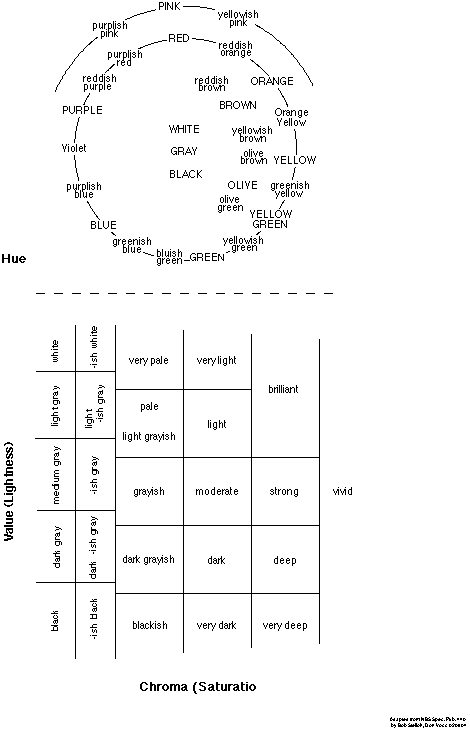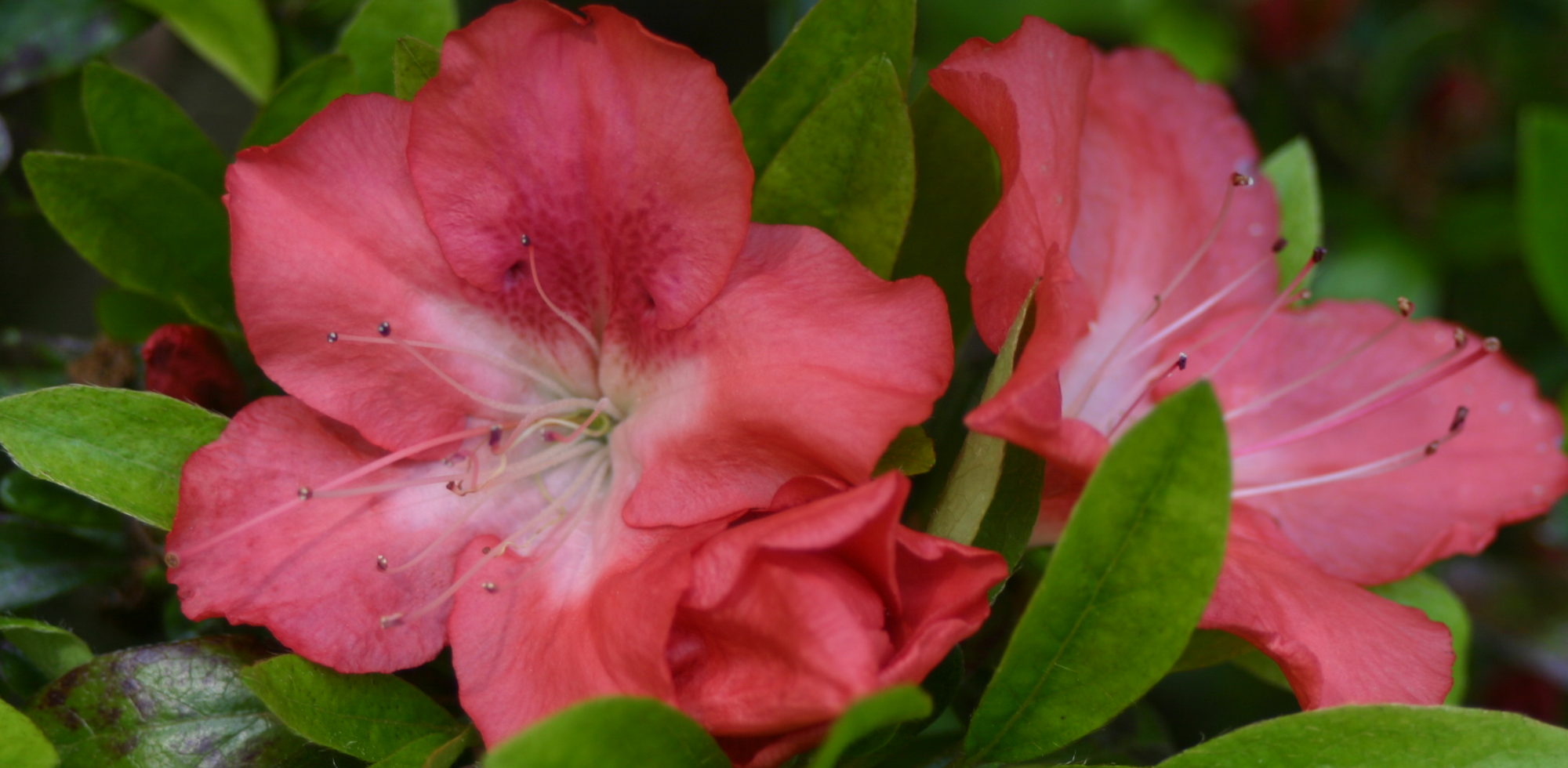Color Entry Help || Color Terms | Color Systems | UCL Chart ||
Color Terms
bloom color – the major color as viewed from a foot or less away. For example, light yellowish pink.
value/chroma – one term for the combined value (lightness, from pale to dark) and chroma (intensity, from grayish to vivid) of the color. Example – the light in light yellowish pink. The relationship of these terms to each other is shown below on the UCL color chart.
hue modifier – the secondary color. Example – the yellowish in light yellowish pink.
hue – the primary color. Example – the pink in light yellowish pink.
The menus terms can easily be combined to create impossible or useless color names, such as reddish red, so exercise judgement to define only those relatively few valid names shown below on the UCL color chart.
synonyms – any known color synonyms. Examples (for light yellowish pink) – salmon, RHS 27C
color variation 1…6 – describe one variation at a time, by clicking its enter button. That loads a separate page with menus to describe it. The description is then stored on the primary data entry page.
Describe the most obvious variation first, . . . , least obvious variation last. Most of the satsuki variations are pictured in Galle (note that most of these variation names are commonly followed by the term shibori which translates as variation), and is omitted here.
To describe a color fading or shading to another color, or with an undertone of another color, use the bloom color menus to describe the major color, and then enter the variation color without specifying a pattern. Example (for ‘Copperman’) – bloom color = deep yellowish pink and variation 1 = shaded orange.
garden color – the overall flower color as viewed from a distance, such as 20 feet away
Color Systems
A great deal of study has gone into color definitions over the years. Click plant colors for information about some other color systems that have been used for this purpose.
The Universal Color Language (UCL) used in these color menus was defined by the Inter-Society Color Council-National Bureau of Standards in 1946. It gives an idea of the named color without reference to color chips, by combining a very few standard and fairly well understood color names. A valid UCL color name can be a value+chroma plus a hue modifier plus a hue, e.g. light yellowish pink; or a value+chroma plus a hue, e.g. light pink; or a hue modifier plus a hue, e.g. yellowish pink; or a hue only, e.g. pink. Although each such name describes a rather broad range of colors, and thus is not useful for plant identification, it is quite useful for garden planning purposes.
Some other color names used to describe azaleas translate to these UCL colors as:
| Color | UCL color | Color | UCL color | |
| amber | moderate orange yellow | lavender | pale purple | |
| apricot | moderate orange | lemon | greenish yellow | |
| beige | pale reddish brown | lilac | pale reddish purple | |
| blood red | moderate red | magenta | purplish red | |
| brick red | reddish brown | mahogany | reddish brown | |
| bronze | yellowish brown | maroon | deep reddish brown | |
| buff | yellowish brown | mauve | moderate reddish purple | |
| burgundy | purplish red | ocher | dark yellow | |
| canary | light yellow | orchid | light purplish red | |
| carmine | purplish red | peach | light yellowish pink | |
| cerise | bright red | periwinkle | light blue | |
| chartreuse | pale yellowish green | plum | reddish purple | |
| chestnut | reddish brown | rose | purplish pink | |
| cinnamon | yellowish brown | ruby red | deep red | |
| copper | reddish brown | rusty | reddish brown | |
| coral | deep pink | salmon | yellowish pink | |
| cream | yellowish white | scarlet | reddish orange | |
| crimson | deep red | silver | grayish white | |
| dusty | grayish | strawberry | red | |
| fawn | pale yellowish brown | tan | yellowish brown | |
| fuchsia | reddish purple | tawny | yellowish brown | |
| gold | greenish yellow | vermilion | red | |
| ivory | yellowish white | wine | purple |
UCL Color Chart
The circular Hue chart shows the valid UCL colors, which are the only hue modifier and hue combinations that should be chosen with the menus. Most of the color names are shown on the circle, with lighter colors on the outer arc and darker colors on the inner arc.
The lower Value/Chroma chart shows the terms used to describe the color value or lightness as it varies from top to bottom, and the color chroma or saturation as it varies from left to right.


